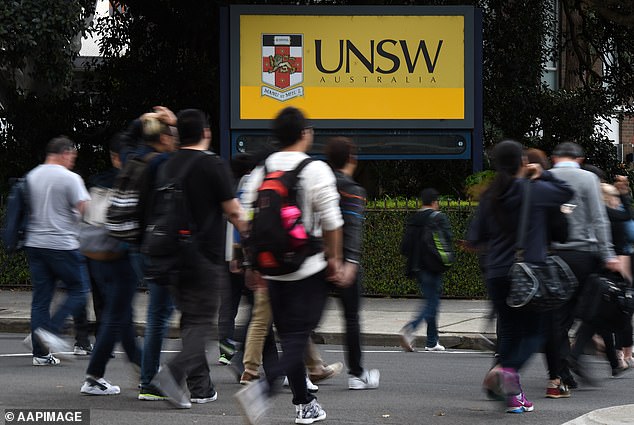Albanese government offers extraordinary excuse on why immigration levels are still high
Australia’s net immigration is high because not enough people are leaving the country, not because his government is letting too many in, according to Finance Minister Jim Chalmers.
His own ministry predicted in the May budget that net overseas immigration figures (inflows minus outflows) would halve from record highs this budget year.
When asked why the numbers were still much higher than predicted, Dr Chalmers said this was because too few people were leaving Australia permanently.
“The most important thing we see in net migration abroad is the number of departures,” he told Sky News on Sunday.
‘More people are staying and fewer Australians are going overseas. That also has implications for net migration overseas.’
The May budget forecast that the number of foreign migrant arrivals would fall to 260,000 in 2024-25, down from 528,000 in 2022-23.
However, net migration out of Australia has barely changed from that record level. Data released last week showed a net 509,800 migrants entered Australia in the year to March.
The start of the new budget year has also had little effect, with 432,150 migrants moving to Australia in the year to July.
Finance Minister Jim Chalmers (right with wife Laura) now suggests that Australia’s immigration figures are still high because not enough people are leaving the country permanently
Dr Chalmers indicated that the Treasury’s mid-year economic and fiscal outlook, due to be published in the coming weeks, will include updated forecasts pointing to higher immigration levels than predicted in the Budget.
“In terms of arrivals, we are about as expected, but in terms of departures, that is the big difference. Therefore, the forecasts for net migration abroad will probably be revised, because there are fewer departures,” he said.
‘The number of arrivals is falling, the number of departures is falling. That affects the updated figures when we publish them.’
The permanent inflow for 2024-2025 is capped at 185,000. This group also includes skilled migrants.
This also means that international students, who are considered long-term students, make up the largest portion of Australia’s immigration flow.
The number of international student visa holders continued to grow last year, from 473,514 in January to 672,782 in October, according to data from the U.S. Department of the Interior.
The Institute of Public Affairs, a conservative think tank, calculated that Australia would have an average of 602,315 international students in 2023, 65 percent of whom were in work and earned an average of $44,017 a year.
That’s less than the minimum wage of $47,627 for a full-time job, because international students are allowed to work a maximum of 48 hours every two weeks during the university semester.
Education was Australia’s largest export service last year, worth an estimated $48 billion.
Data from the Australian Department of Foreign Affairs and Trade shows that only iron ore, coal and natural gas are worth more to the Australian economy.

International students, classified as long-term arrivals, make up the largest proportion of Australia’s immigration flow (pictured is the University of New South Wales)
However, according to Kevin You, a senior fellow at the Institute of Public Affairs, the value of education as an export product is overstated by $17 billion because it also includes the amount international students spend in the local economy.
“This claim, which is reinforced in government documents, is based on the assumption that all expenditure by international students while studying in Australia is an ‘export’,” he said.
‘This means that the expenditure of a student who works while studying and spends the money they earn locally in the Australian economy is classified as export earnings.’
According to Dr. You, international students are worth $31 billion, not $48 billion.
Education Minister Jason Clare announced a plan last month to cap the number of international students at 270,000 by 2025.
The record high immigration figures coincide with a housing crisis, which means that the percentage of vacant rental properties in the capitals is still at an extremely low level of 1.3 percent.
